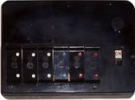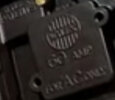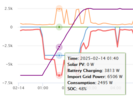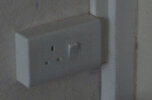It does seem to be never ending, one thinks the house is up-to-date, and another rule is either changed or clarified, latter is the worst, as it basic says we did not mean this to be read as reported in all the trade publications, what we expected was it to be read as XYZ which is not what electricians thought.
So we thought having two RCD each rated 60 amps was OK with a consumer unit supplied from a 100 amp supply, as the power would be shared between them, but it was clarified that if the supply is 100 amps, then we need to 100 amp rated RCD's.
The problem is we often don't know the size of the DNO fuse, or in other words size of the supply, it could be 60, 80 or 100. And as electricians, we are not allowed to look.
So with an old Wylex fuse box,

we know the main isolator is rated 60 amps.

So if the DNO has done its job correct, the fuse should be no more than 60 amps, so when we fit a new consumer unit the RCD only needs to be rated 60 amps, but this relies on "if the DNO has done its job correct" and unless there is a sticker on the DNO fuse, how do we know, well I was there when the meter installer removed to fuse to fit a new meter, so I know it is 60 amps, but unless something like that, then we simply don't know.
So I have a consumer unit rated 100 amps, and a 60 amp DNO supply and a 5 kW solar panel inverter, 5 kW = 21.7 amps, so my supply is 81.7 amps, so the DNO should not up-grade my fuse, unless I have a 100 amp fuse fitted before the consumer unit.
So the electrician is often left with a problem, he simply does not know if the home complies, it is not a cut and dried answer so he has to assess the risk, again my house, I can look at my usage

and I can see maximum power I normally draw is 6.5 kW or 28 amp, very rare do I exceed that, so if I had a single RCD then looking at the reports over the last year, I can see in real terms no problem, and most people will be in the same boat, so even if it does not technically comply, I see no reason to worry and upgrade.
So 4 x 32 amps = 128 amp, on an 80 amp RCD, but likely a 60 DNO fuse so not a problem, and even if DNO fuse 100 amps, then not likely you would draw maxium except under fault conditions, and fault amps is something completly diffrent.
What may be more to the point, is you have mulitple circuits all on a type AC RCD, and DC can stop a type AC RCD working, however with a type A RCD it is only rated at 6 mA DC, so without any way to see if there is a DC leakage, even a type A can stop working, and 6 mA is not much, so in real terms not worth worrying about, better if each circuit has its own RCD (using RCBO's) but as long as the test button is used every so often, I do it just before clocks change, then the risk is rather low, and not worth worryng about.







